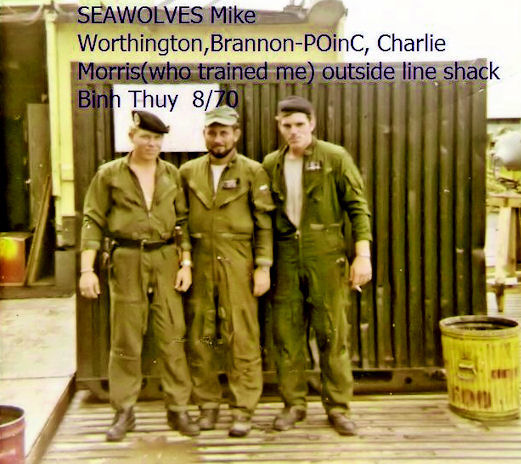U.S Navy Seawolves
Muchos Graphics, hit REFRESH button if they don’t load or go to each photo and rt. mouse it and then click on SHOW PICTURE
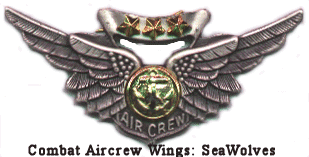
US Navy Helicopter Attack (Light) Squadron Three Seawolves, Vietnam 1966-1972


From: Greg Starbuck <cwkepi [at] earthlink.net>
Subject: Seal Team Two
To: el_ticitl [at] yahoo.com
Date: Thursday, April 29, 2010
Mr. Riojas, I enjoyed looking through your Seal Team website. It was nice seeing the photographs of Chuck Jessie. He was one of my Scoutmasters in Troop 65 in Virginia Beach, long, long time ago. It brought back many memories. Sincerely,
Greg Starbuck PS- Dad was a Seawolf pilot. Thank you Greg,
It is nice to hear from somebody that goes into my web site. Your father IS a seawolf pilot, NOT WAS! May i have his name and a picture for that page? Chuck Jesse, a fine warrior, we are still in touch at the Ft. Pierce UDT SEAL Museum Musters. Thank you very much.
Tu AMigo Erasmo Doc Riojas
Thursday, May 13, 2010 3:56 PM
From: Greg Starbuck” <cwkepi [at] earthlink.net>
Re: Seal Team Two
Here’s his photo. His name is Cdr. Tom Starbuck, Seawolf pilot ‘nam era.
US Navy Helicopter Attack (Light) Squadron Three SEAWOLVES


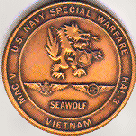
Vietnam 1966-1972
The US Navy established Operation Gamewarden in 1965 to enforce curfews, block Viet Cong infiltration, protect water traffic and counter enemy movement and supply efforts. The Navy also recognized the necessity of rapid air support for the river boats that cruised the narrow canals and rivers of the Mekong Delta. It was from that need that HA(L)-3 was commissioned in 1967 and adopted the call sign and nickname Seawolf for the helicopters.
Conrad Jaburg, Seawolf Pilot, USNaval Aviator Retired

John Gana, Naval Aviator ‘nam war games, USN Retired, at book signing Houston TX, Marcus Luttrell’s book “LONE SURVIVOR.”
Doc Rio,
It was good to meet you out there at the book signing. It’s always pretty inspirational to me when a couple Christians can meet in a crowd like that. I spent one year in south Vietnam (Sept 70-71) at Binh Thuy (3 months driving slicks) and Nam Can / Det One (9 months driving guns). I did another 6 months off Haiphong in the Tonkin Gulf. I went back in the early 80’s and motored around off Da Nang for a while watching the Russians.
We worked with the Teams assigned to Nam Can and Cau Mau, slightly north of us. Do you remember Tom Richards. He ran the school at Coronado and later became an O-7, headed up Specwarcom. I was on the mission when he and Grant got shot up in ’71. Det One Seawolves got shot up a lot, they used to brief the CO at Binh Thuy every morning. The same question – How many dets got mortared last night and how many rounds did Det One take. We got it most nights. We worked closely with our SEAL buds, in fact the base CO at Nam Can put us at opposite ends of the base. He said it was for protection to spread out his fighting forces. I think he mostly wanted to keep the SEALs and Wolves separated so we would not tear up the base too much. We had some great times out there. Some good missions too.
I did the Run for the Wall about a month ago,on my Harley.. Check out www.rftw.org , I did the southern route. It’s a mission, not a party.
We have a specific southern route site at http://www.rftwsr-2006.us/.us . If you have a scooter or some friends that are interested in making the run next year, let me know. We had several hundred make it this year, four were wolves this time, a “wolf pack”.
Already planning to do it again next year. Check this out: https://www.youtube.com/watch?v=KtTlDucGszU , My bike and I are in that video about a minute and a half in it.
Take care brother, welcome home! John “Ice Pac”
John.Gana @ coair.com


The Gunships
The Bell UH-1 armed helicopters operated by HA(L)-3 were, in most respects, straight line Army machines. Temporarily surplused from the Army inventory, these helicopters had usually already seen a lot of long and hard use. Those received directly from the Army units in Vietnam most often required a good deal of repair and rejuvenation before being sent out into Naval service. Others received from the Army’s overhaul depot in Corpus Christi, Texas, were generally in much better condition. “Navalizing” these helicopters was relatively simple involving addition of the specialized door gun mounts and a radar altimeter. The radar altimeter was a crucial piece of equipment, for operating over the flat delta terrain in bad weather, at night, in the absence of a good horizon reference, required precision altitude indications. This was especially true when recovering aboard the support ships at night as landing aids were very rudimentary. A shortage of radar altimeters plagued the squadron for many months so that they were rationed to those dets which operated off the boats, and even then it was not unusual to find only one helicopter in a det with this specialized instrument.
The UH-1B, which formed the backbone of the squadron’s aircraft assets, was powered by a Lycoming T53-L-11 engine and incorporated a standard Bell UH-1 rotor head. In 1970 a few UH-1C’s found their way into HA(L)-3. The UH-1C, although equipped with the same engine as the B, used a new flex beam main rotor which provided easier maintenance and some improvement in maneuverability. But more importantly, the “Charlie” model incorporated an increase in both gross weight (+1,000 pounds) and fuel capacity (+77 gallons) which combined to expand operational capability.
Still another improvement was the UH-1M, the first examples of which were introduced into the unit on 15 June 1971. Essentially a UH-1C equipped with the Lycoming T53-L-13 powerplant, the “Mike” model’s additional 300 horsepower offered some slight improvement in the squadron’s performance ability. As the Seawolf gunships were rarely flown at anywhere less than over the maximum gross weight, any increase in engine performance was a much needed commodity. It was planned for HA(L)-3 to equip entirely with the Mike model, but the heavy demand for this engine (also used on the UH-1H and AH-1G) kept the Navy on the low side of the priority list. By December 1971, only 11 of the Seawolve’s gunships were UH-1M’s.
Seawolf Vietnam Pilot: Capt. Gerald M. “Jerry” Weber, USN (Ret.)

Capt. Jerry Weber, USN (Ret.) relaxes in the den of his Fort Clark Springs home, largely furnished with sanded birch furniture of his own design and manufacture. Weber’s Navy career spanned three decades, high security clearances, and often dangerous assignments, none hinted at by the avuncular host’s keen intellect today. (LIVE! photo/Bill Sontag)
In 1969, Weber shipped out to Vietnam, as a flyer in the Helicopter Attack (Light) Squadron 3—the famed “Seawolves.” “It was the most decorated Navy squadron of any kind in Vietnam,” Weber said. “You were there for a year, flying Huey gunships, and the average Seawolf pilot flew 320 missions in that time.” His first five months “in country,” Weber flew “slicks,” unarmed Hueys for transportation of logistical materials and men.
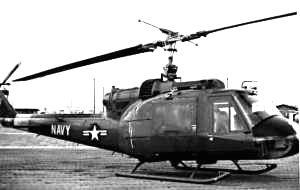
Weber flew more than 300 mission sorties in the last seven months of his year in Vietnam in the UH-1B Seawolf helicopter. The Seawolves, Weber says, were the “most decorated Navy squadron of any kind in Vietnam,” armed with rockets, machine guns, and miniguns “that shot a stream of fire at the enemy.” (Contributed photo/US Navy)
At the edge of the U Minh Forest, a coastal swamp of mangroves and other densely-grown salt-tolerant trees and shrubs, Rach Gia served as a staging area for support of Vietnamese and U.S. troops in the surrounding “free fire zone” with its latitude to fire at will at well-identified targets of opportunity. It was a dangerous place. “I went to Vietnam with six lieutenant junior grades, and only came home with three,” said Weber.
His first air mission in the UH-1B “Seawolf” Huey from Rach Gia illustrated the 300 missions Weber flew in his last seven months in Vietnam, flying above the U Minh forest in support of U.S. troops working with and ingratiating villagers, while staunching the flow of North Vietnamese soldiers into South Vietnam. His unit also flew air cover for Swift Boats and PBR (Patrol Boat River) watercraft of “The Brown Water Navy.”
“April 8, 1970. I will remember that day forever. We were scrambled at 3 a.m. to support a MAT (Military Assistance Team) in the forest. As we got near, we could see tracer rounds being exchanged—50 caliber machine guns, AK-47 assault rifles, M-16s—with both Viet Cong and NVA (North Vietnam Army) advancing on the MAT [of South Vietnamese ‘regulars’] team along the river. They were running out of ammo, and calling to us, ‘buster, buster, buster,’ which means ‘hurry, hurry, hurry.’
“We flew in at 1,000 feet, and then turned our noses down—at 80 knots—and when we did, all that blanket of fire aimed at the MAT turned up to us. But we stayed there and fired for 20 minutes before we had to return to Rach Soi [another air base about 20 kilometers from the fire-fight] to refuel and get more ammo. Frankly, we were hoping we wouldn’t have to go back, but our relief, Army ‘Copperhead’ helicopters came in. They were all ‘cowboys’ who had gone in at 300 feet and got all shot up [aircraft disabled],” Weber explained.

An H-3 “Sea King” helicopter watches over a team of Navy Seals, dropped to place a flotation collar around an Apollo capsule in the western Atlantic Ocean. Weber, a “Sea King” pilot, served as chief of the Recovery Division of the Department of Defense Manned Space Flight, 1972-1973. (Contributed photo/US Navy) (click image to enlarge)
So the Seawolves returned, expended all their ammunition again, and finally returned to Rach Soi. “We know we killed more than 60 people that night. I thought the missions would get worse, but from then on they were all pretty much the same.”
But he still laughs about a team of Navy Seals who woke Weber up in the middle of the night, during driving monsoon rain and wind, to announce they were going up a canal. Later the Seals radioed to Weber for help, and the Seawolves flew upriver—only ten feet off water surface—as he repeatedly asked for directions to their location. “Can you hear us yet?” “No,” came back a strangled reply. Again, and again the same response. Finally, Weber asked “Why are you whispering?” “Because we’re surrounded, you asshole!” said the Seal, as his men finally ran for their boats, firing in 360 degrees. “They fired a flare, but straight up, so we still couldn’t tell where they were.”
After Vietnam service, Weber was promoted to commander’s rank (equivalent of lieutenant colonel in other services) and was named operations officer for the Navy’s duties in the Manned Space Flight Program. At Patrick Air Force Base, Fla., he was elevated to chief of the Recovery Division for the Department of Defense (DOD) Manned Space Flight (1972-1973), reeling in the Apollo astronauts and Skylab from the southern Pacific.
So the Seawolves returned, expended all their ammunition again, and finally returned to Rach Soi. “We know we killed more than 60 people that night. I thought the missions would get worse, but from then on they were all pretty much the same.”
—–Original Message—–
From: John Leandro Warrior26 [at] aol.com
Sent: Thursday, May 22, 2008
To: UDTSEAL1
Subj: SEAL Missions in Vietnam
I don’t know if this site will be able to help me or not, and if not maybe direct me to someone who can. I am trying to get some information with regards to a couple of SEAL missions I was involved in during the Vietnam War.
I was helicopter pilot in Vietnam 69-70; I was with the 336th Assault Helicopter Company, call sign Warriors. My call sign was Warrior 26, and I worked on different SEAL operations in the IV Corps. off of the Sea Float in the southern most delta AO, but there are two missions that I would like information from any SEAL’s who may have been on those missions, or know anything about them.
* A SEAL team needed to be extracted. We were a two ship mission scrambled out of Soc Trang at about 23:00 hours. The initial briefing was that a SEAL team was in contact and needed to be extracted from the middle of Human Forest (sp). When we landed at the sea-float, we were brief by a Navy Lt. Cmd., who said, that the team had come across a number of sampans and intended to ambush the last sampan, which they did, however; it turned out to be the next to the last sampan, and were now in between the bad guys. They were supposed to have some prisoners with them, and they were going to be put into the second ship inserted into the PZ. (mine) As I started my approach to the PZ the flare ship kicked out two flares that lit up, but the parachutes failed to open. By this time I was on very short finial, and had lost all of my night vision, because of the bright flares. I did not want to make a go-a-round because we were the last ship in and by this time the bad guys knew we were getting the good guys out. I did the only thing that I could do which was to put on my landing light which exposed my ship, but I was able to pick out a spot to land. Once I was down, I turned off the light, pick up the team, and every one got out OK. I believe that this took place in April, or May of June, of 1970, but I not certain.
I would like to hear from anyone who may have been on that team that I picked up. I am very curious as to what the reason that we picked them up, and is what I remember what they told me in the briefing accurate.
The second mission I want to know about is:
* In May of 1970, my company was supporting a SEAL operation between the towns of Bac Lu and Cam Mau. A SEAL was wounded, along with some Vietnamese who were working with them. I pick up the SEAL, and Medivac’d him. He was pretty badly wounded; I believe he had a sunken chest wound. I about flew the aircraft as fast as that sucker would go trying to get him the hospital. I was just wondering if he made it. I sure hope so.
Thanks,
John Leandro
Warrior26@aol.com
Webmaster’s NOTE: I hope somebody out there can help this huey pilot ! Doc Rio
This email was cleaned by emailStripper, available for free from http://www.papercut.biz/emailStripper.htm



Art Schmitt http://www.ppvolunteers.org/pdf_files/Seawolf.pdf


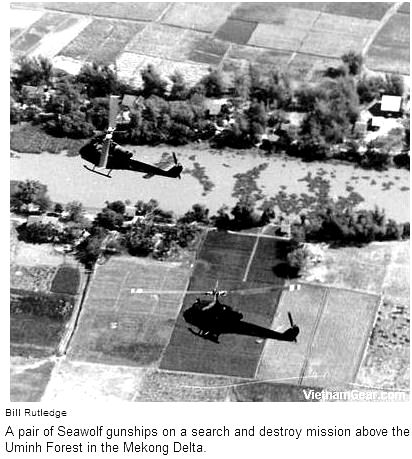

Scramble Seawolves! Part 1 The Black Ponies, limited to runways, would operate from a central base, similar to the Army, but would bring to the problem a much faster aircraft and the ability to be dedicated to riverine support from an alert status. They could get to the far reaches of the Delta three times as fast as Army helicopters and almost as fast as the local Seawolves. When they arrived, they brought with them welcomed firepower in the form of 5-inch Zuni rockets and twenty-millimeter guns that was unmatched by any Army aviation we ever saw in the Delta. Heavy artillery for the really big jobs in our little war. They were far more effective than any Air Force or carrier bombers (not that we ever saw any) because of the Black Ponies well-respected pinpoint close air support. They knew the boats, and the Seawolves. We complemented each other nicely. Throughout the Delta, Seawolves and Black Ponies were considered by all commanders to be their own FACs, an acknowledged and approved exception to MACV policy existing at the time, which required FACs to control and direct “gunships”. By 1971, the Seawolves, Black Ponies, and SEALS were the last remaining Navy combat forces in the Delta. They held the line while U.S. forces withdrew from the Delta.
|
HELICOPTER ATTACK (LIGHT) SQUADRON THREE




Kirkus Reviews
An unsentimental personal account of the Vietnam War. With the assistance of magazine writer Riebling, retired SEAL master chief Keith chronicles a tale that’s oddly refreshing in its clear-eyed bluntness. The author and his tough-as-nails team had jobs to do, he writes, carrying out missions protecting friendly villages from Viet Cong attacks; they simply did not have time to let the brutal surroundings affect them.
The narrative opens with the SEALs surrounded by explosions and tracer fire as they wait to be extracted by helicopter. Keith was not consumed by fear, as most people would be. Instead, he reflected on how the red tracer fire was “as beautiful as any Fourth of July fireworks display” and how lucky he felt to be doing a job he loved. The son of a Navy chief and the grandson of two Army veterans, from an early age Keith dreamed of entering the military, and his determination and skill led him to the elite Navy SEALs.
More Reviews and Recommendations

Scramble Seawolves! Part 1
by Tom Phillips, Seawolf 98
Reprinted with permission
The Black Ponies, limited to runways, would operate from a central base, similar to the Army, but would bring to the problem a much faster aircraft and the ability to be dedicated to riverine support from an alert status. They could get to the far reaches of the Delta three times as fast as Army helicopters and almost as fast as the local Seawolves. When they arrived, they brought with them welcomed firepower in the form of 5-inch Zuni rockets and twenty-millimeter guns that was unmatched by any Army aviation we ever saw in the Delta. Heavy artillery for the really big jobs in our little war. They were far more effective than any Air Force or carrier bombers (not that we ever saw any) because of the Black Ponies well-respected pinpoint close air support. They knew the boats, and the Seawolves. We complemented each other nicely. Throughout the Delta, Seawolves and Black Ponies were considered by all commanders to be their own FACs, an acknowledged and approved exception to MACV policy existing at the time, which required FACs to control and direct “gunships”.
By 1971, the Seawolves, Black Ponies, and SEALS were the last remaining Navy combat forces in the Delta. They held the line while U.S. forces withdrew from the Delta.







Mike Worthington

From: Mike Worthington
To: Doc Rio
Sent: Monday, March 15, 2010
Subject: SeaWolf Miniguns
Doc
–great web site–really enjoyed reading the articles. I flew with Det 4 Ben Luc from 1/71 to 2/72 and flew SEALORDS out of Binh Thuy from 8’80 to 12/31/70 mostly to Det 1 Nam Can and Det 6 Son Ong Doc doing the mail, parts, people run with some SEAL Insertions and Extractions and MedEvacs. I enclosed some pictures of me and my mini-gun. Take care my friend
Mike Worthington



